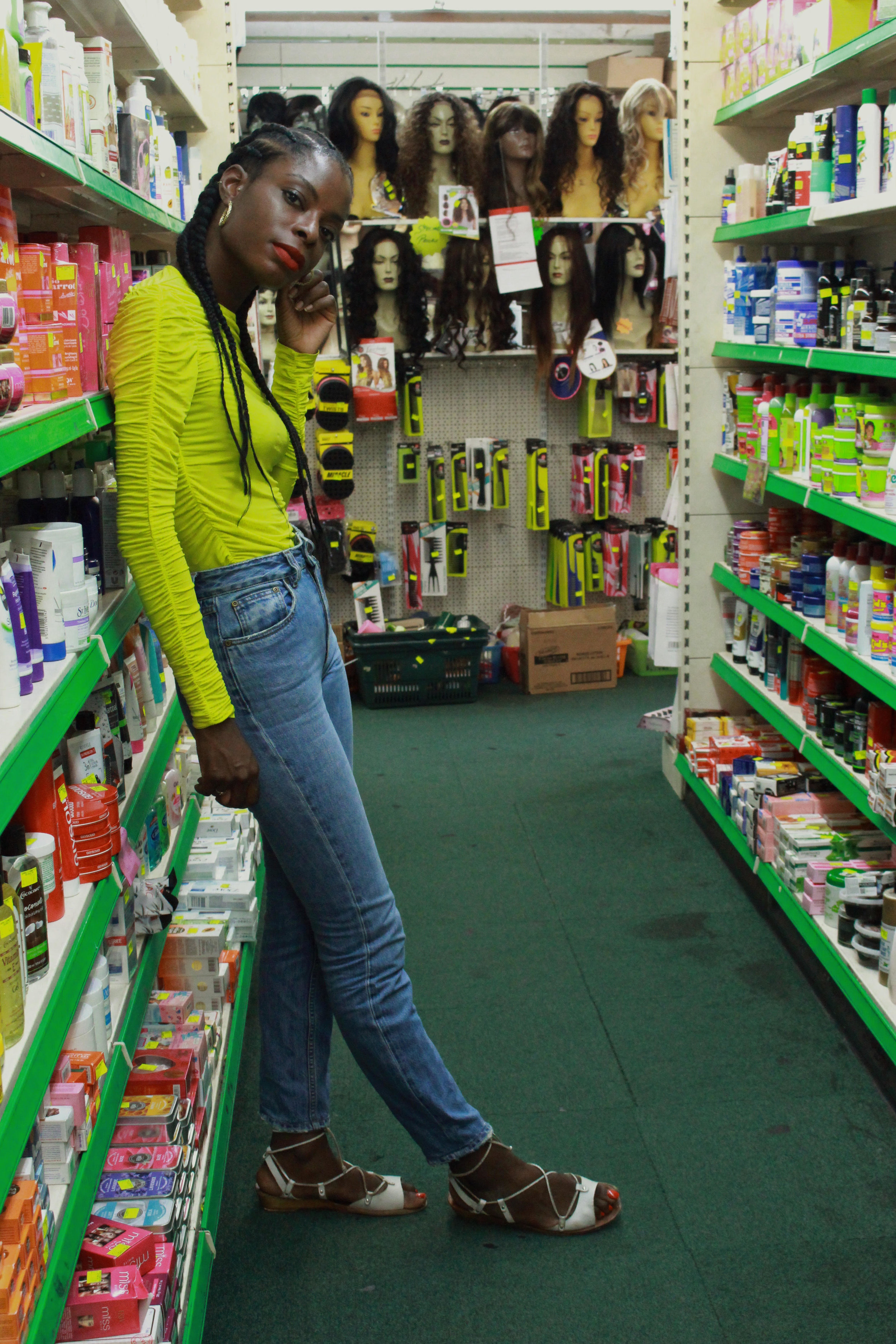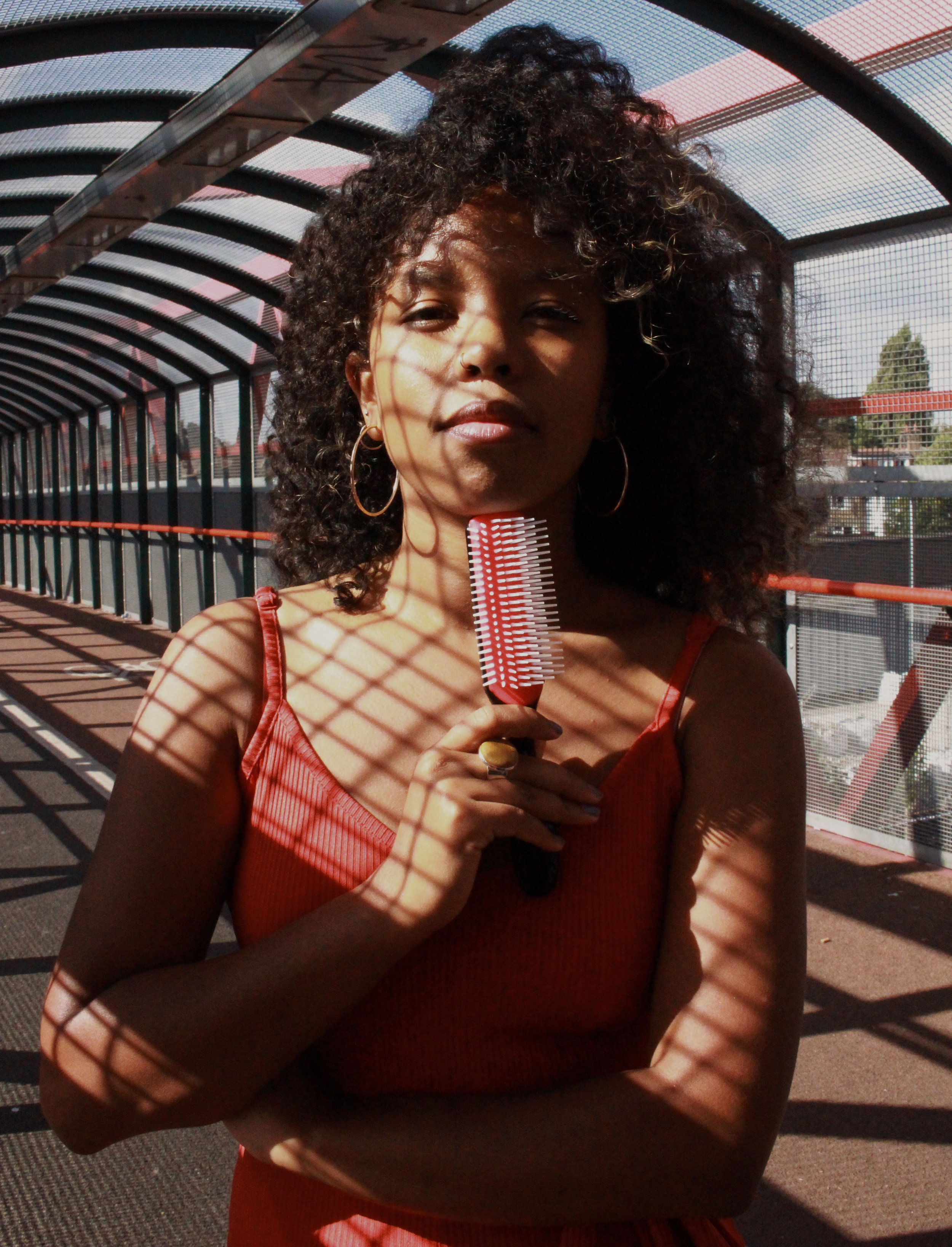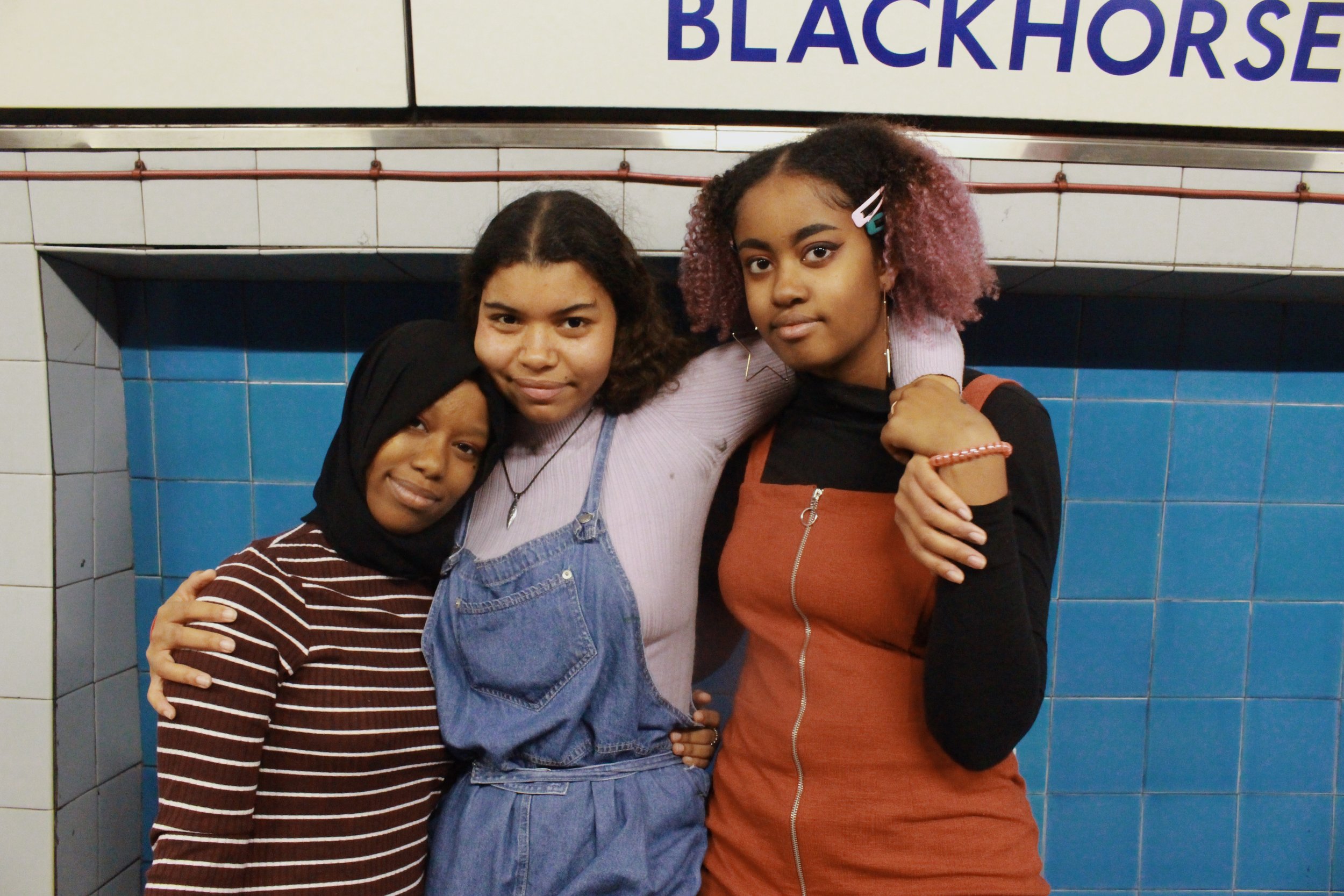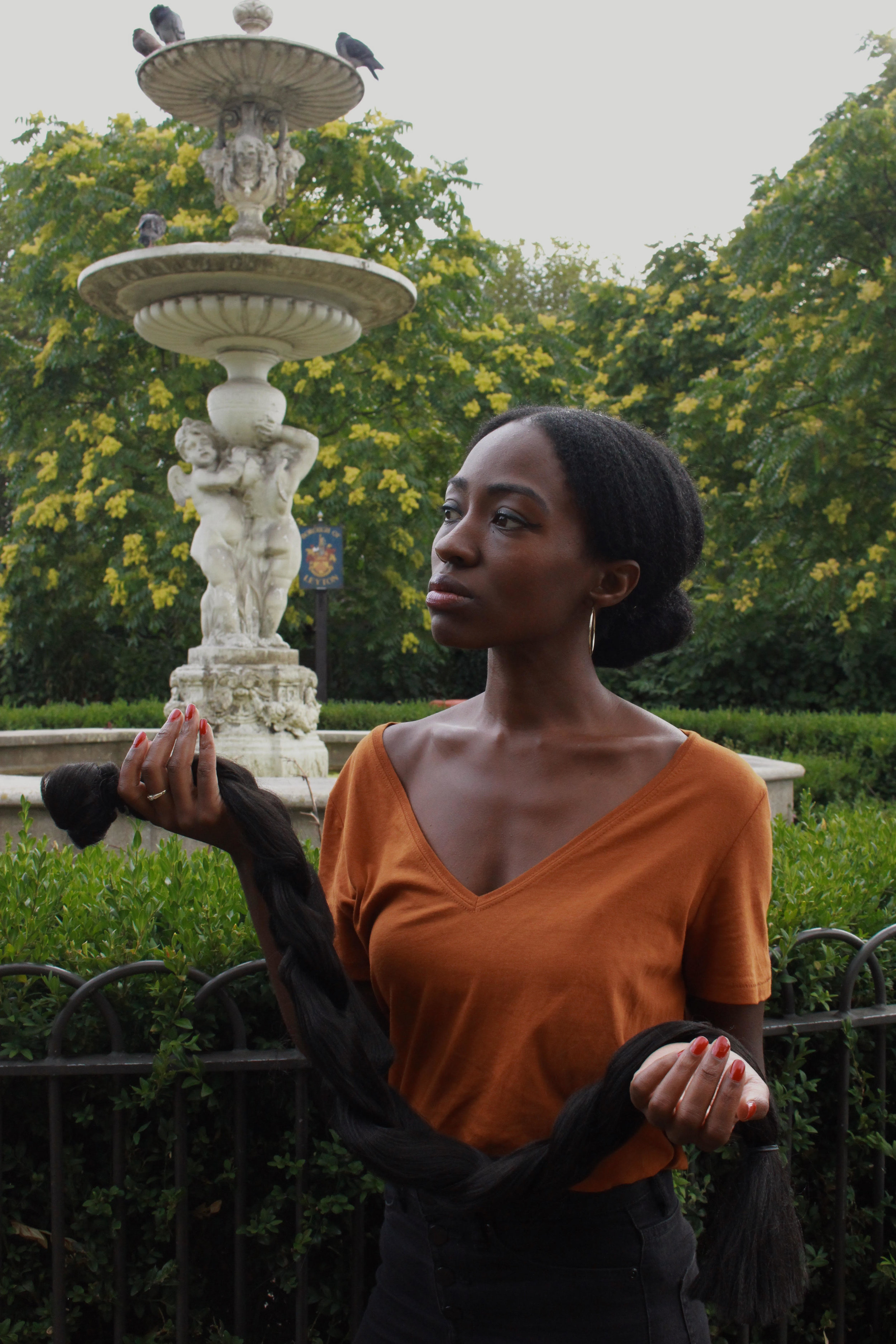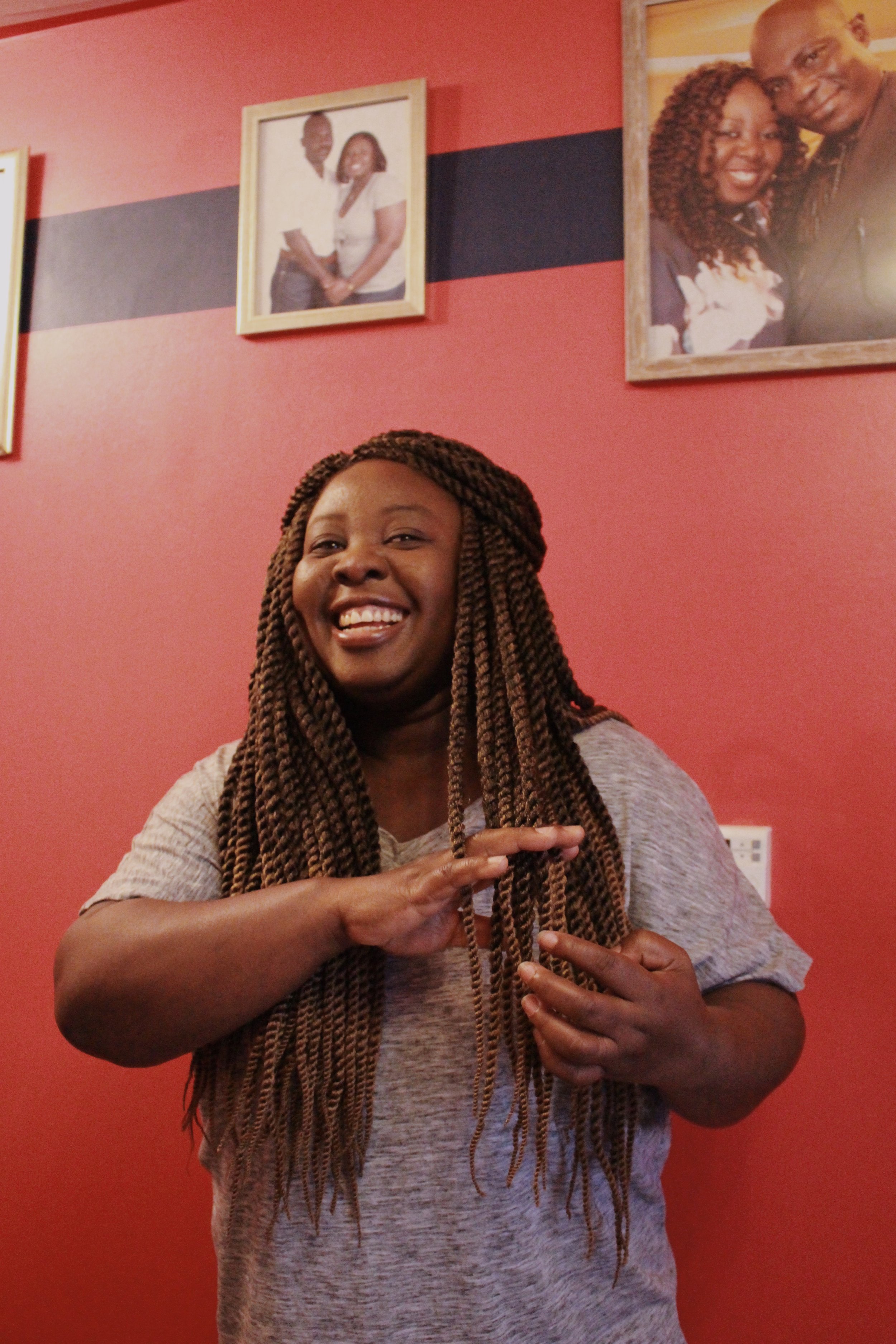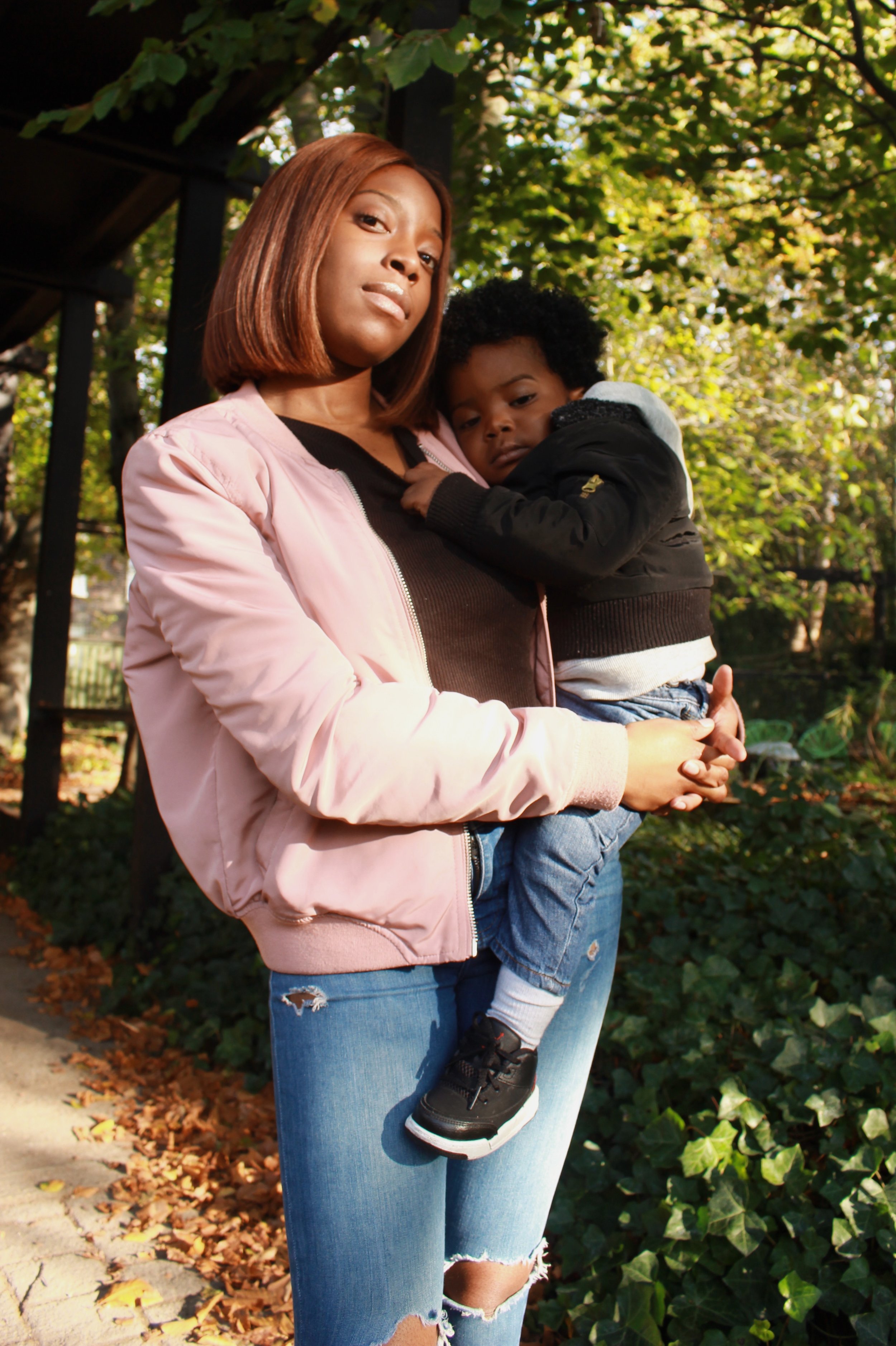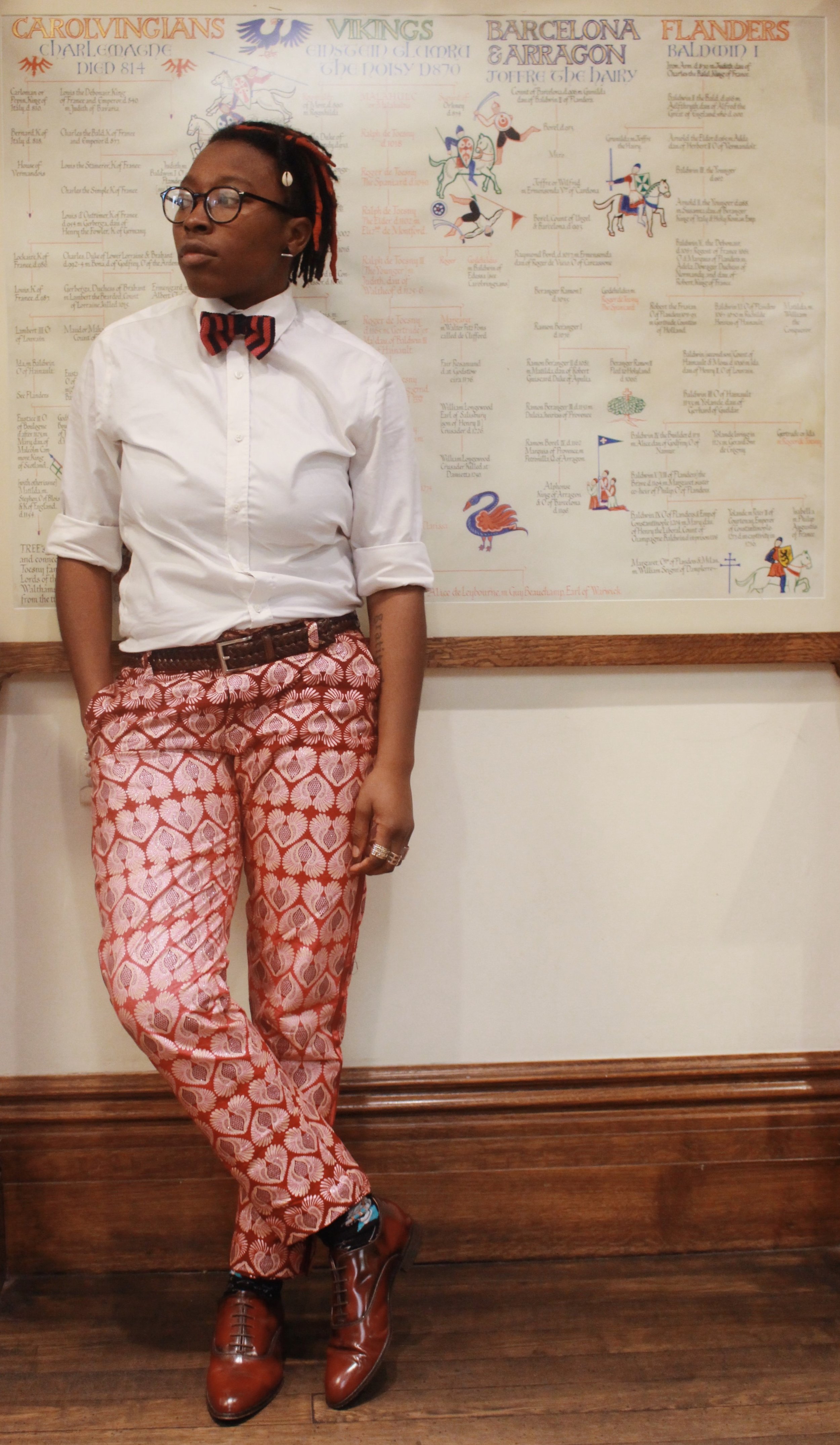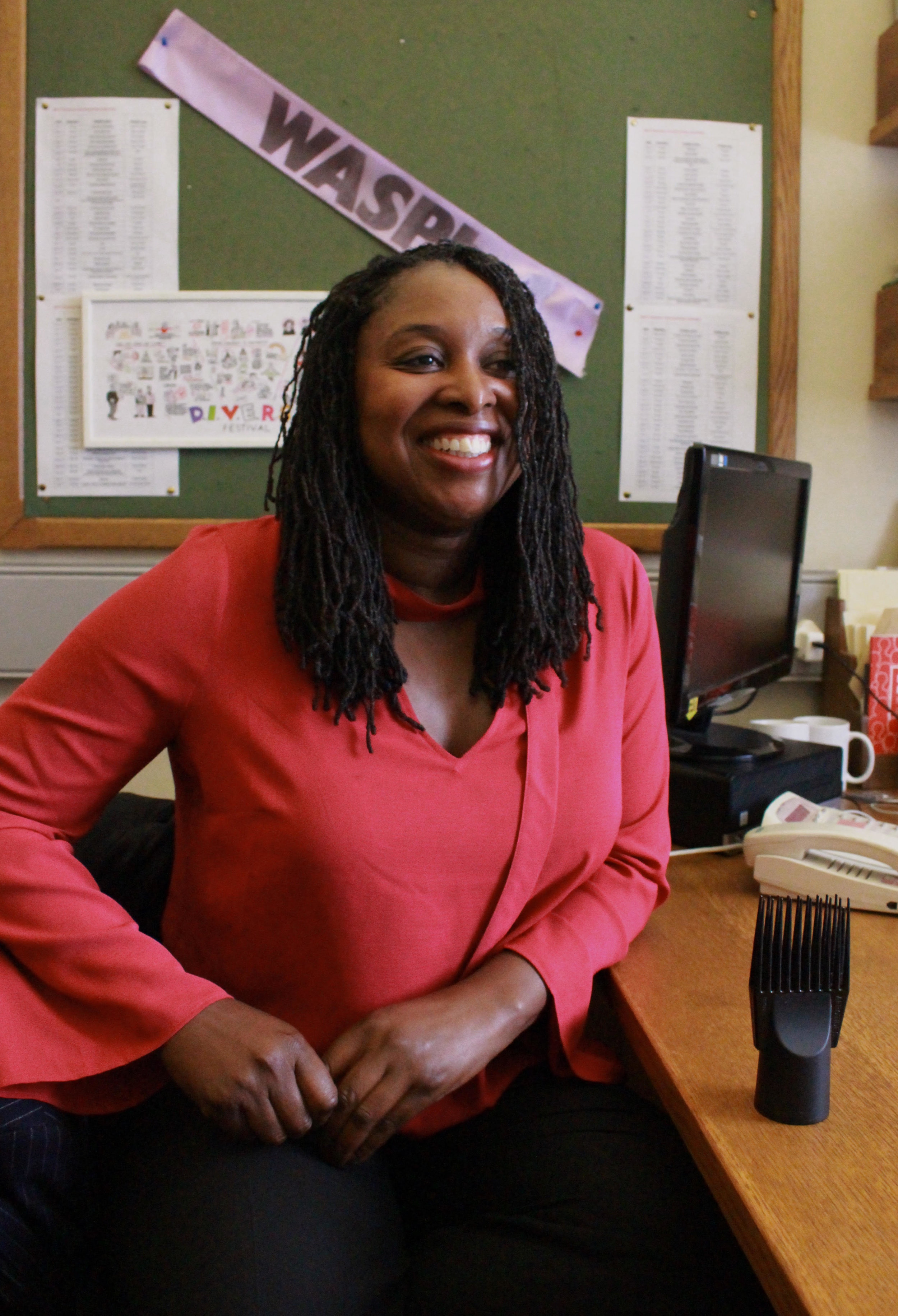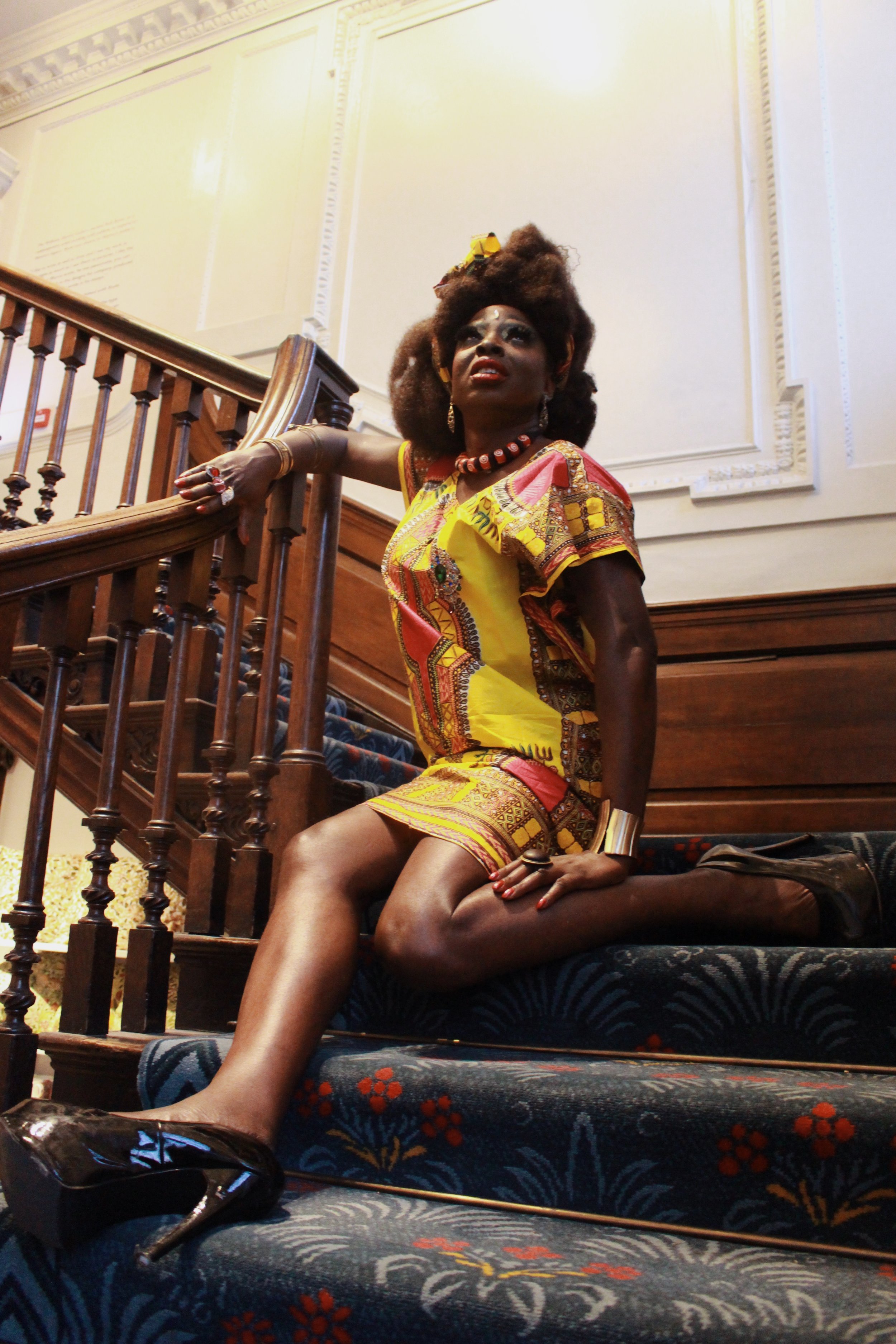Plaits, Princesses + Pink Moisturiser
For black women, hair is often riddled with a mixture of emotions: fear and joy, pain and sisterhood. This new series of striking portraits and stories curated by Korantema Anyimadu celebrates black hair in all its glory.
Akua, postgraduate student
TIGHTS
“When we were kids, me and my sister used to put tights on our head, pretend we had long hair, and play grown- ups. Now, I wear tights to protect my hair, which definitely came from my mum. She used to pay for us to get our hair steamed at the hairdressers. If we didn't wear tights to bed and messed up our hair, she would get sooo mad. I would always do it, except later when I started staying at my friend's houses when I was a teenager – I was a bit too embarrassed.”
In 2006, singer-songwriter India Arie sang the words “I am not my hair”, as a bold renunciation of the fact that her hair – and how it was perceived – had been a source of tension throughout her life. In the song, she explains how she tried to forge an identity through various hairstyles, concluding with the message that we – black women specifically – are so much more than the thing that grows out of our heads. Yet, the emotional journey India experiences with her hair is one many black women recognise. Although hair can often be a source of mixed emotions for many black women (the fear of being perceived a certain way, the struggle to fit in with mainstream beauty standards as young girls), it is also a source of joy, sisterhood, and unbreakable bonds between generations of women. It is this entire experience of black women’s relationship with hair, London-based curator Korantema Anyimadu celebrates in her exhibition Plaits, Princesses + Pink Moisturiser now on at the Migration Museum until June 2019. The exhibitions features the portraits of remarkable black British women and their personal stories, anecdotes and tales of how their hair has forged a part of their identity.
Tell me about your personal relationship with hair and what inspired this project?
I decided to start Plaits, Princesses + Pink Moisturiser after writing my Masters dissertation on hair and heritage back in 2017. I interviewed 50 women about their experiences with hair and how it had affected their relationship with identity, beauty and family. Doing research for my thesis was the first time I was forced to actively reflect on my experiences growing up. My mum worked a couple of jobs when my sister and I were younger. The only time I really remember her spending one on one time with us was when she braided our hair on Friday nights (always in front of EastEnders). I think of that as a labour of love now. Even though hair can often be the focus of a lot of negativity and body policing – like being told you look ‘unprofessional’ if you wear your hair out in an afro – hair care is also a space where relationships are nurtured with the other women in your family. I wanted this project to cover all those aspects, and that's why it was really important for me to interview the women alongside taking their portraits.
Helena, seamstress
MUM
Mum was my role model, she was industrious, kind and loved life. She was proud of her hair; it was very long, silky, soft and ginger. Not a lot of people have red hair in Ghana, so she became known as Maame Ofiri, which means 'Albino Lady'. In Ghana, if you have long hair that isn’t too kinky or curly, it’s really good. When mum turned 100 she cut it short for the first time. She didn’t see the point of wearing wigs and encouraged us not to wear them. When she died earlier this year, the funeral bearer put a wig on her at first. I was so upset because she didn’t wear wigs at all during her life and felt quite strongly about that. They buried her without one in the end.
Otegha, author and founder of women who
THE HOLY TRINITY
Blue Magic, Sulfur 8 and Pink Oil Moisturiser were the classic trio, the Holy Trinity. They were used consistently by my mum when she did my hair, which obviously is not good for you but we knew less about it then. The colour of the packaging was so exciting as a child, but then when you opened it – ugh the smell! I hated the way it smelt so unnatural and artificial, and the way it rubbed off on your pillow and left a stain on your headboard. Now I go to the hairdressers to get my hair done and don't touch those products anymore. The relationship you have with a good hairdresser is sacred, and when you find a good one you don’t let them go. Sometimes I don’t even look in the mirror before I leave my hairdresser’s house. That’s how much I trust her.
For this project, you photographed and chatted to some trailblazing black women. How did you go about selecting who to feature?
I reached out to black women and femmes who I really admire. For example, Dawn Butler is never afraid to speak up in parliament, Otegha Uwagba has built an incredible network from scratch that supports women, Son of a Tutu is making waves as a proud Nigerian and a drag queen, and Amina leads a social justice choir for black women and femmes called Nawi Collective. I grew up in Leyton (east London), so I especially wanted to highlight women who had a connection to my area, like players from Leyton Orient Women’s Football Club, and those who are often overlooked, like local foster carers and nurses.
What was your creative process for the photographs ?
All the portraits were shot by an amazing photographer Nana Ama Owusu-Ansah. She's very talented at capturing people's personalities. We wanted each photo to be an intimate and proud representation of each woman. We met everyone individually for about two hours for a long chat before we began shooting. I asked them to choose an object that reminded them of their hair and used that as a focal point when I interviewed them. The objects they chose were varied and included things like sports medals, old photos and tights. I held an exhibition displaying these items alongside the portraits last year. I think spending that quality time with each woman made it easier to capture their true likeness. We photographed some of them with their chosen object, some in their favourite place in Waltham Forest and others in a place they felt reflected their personality.
Amina, housing activist & choir leader
DENHAM BRUSH
Mum would brush my hair with a Denham brush and I looked just like Diana Ross. She's Chinese Singaporean and my dad’s Kenyan. Dad liked my hair out, but I think my mum wanted to contain it. She often said it was hard to manage. I was really into Rock and Indie music when I was 16, and it was a really white scene. I wanted my hair to move like white people’s hair, to have weight because when you have hair like mine and you’re headbanging it just doesn’t work. I felt so out of place, so I straightened it. I think my hair is quite important to my identity. People have called my hair different things over time - they’ve said it’s wild, loud - and I think I’ve internalised some of that. I guess I’m quite a loud person and my personality is wrapped up in my hair.
Gloria, museum officer
HEADSCARF
Having my hair done was a sad, sad experience! My hair is 4C and tight, so getting a comb through it is hard work but mummy is the only person I would go to, to braid my hair. Mummy would start on a Thursday before her night shift, plait half my head on a Friday, so that by Sunday it was usually finished.I used to cry when I only had half a head done. Sometimes we would bring our friends over to get their hair done too, so mummy was basically doing our hair on rotation. I love having my hair in different styles. I like my natural hair just as much as I like my wigs and headscarves; that versatility is part of the beauty of black hair.
What do you want people to take away from this project?
I want people to appreciate the conflicts, tensions and joys that are a part of our experience with hair. Growing up as a black woman in this country can be tiring. We have to spend so much time trying to fit in or stand out, appease our family members and employers. You can't help but wear all these tensions on your body, and it filters down to something that may seem as insignificant as the stuff growing out of your head. In the same way, I hope people can see the joy, pride and beauty that is intertwined with hair and the unique stories it holds.
To find more about this project, visit @black.hair.stories or www.korantema.com.



